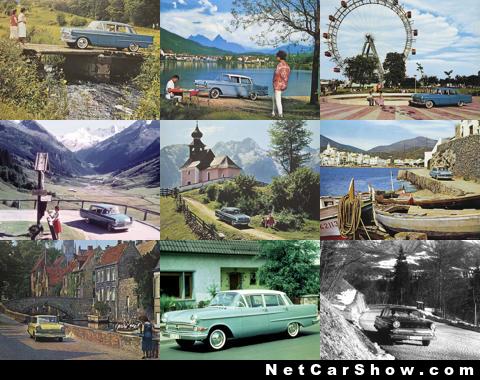Opel Kapitan
In the fall of 1959, the new Opel Kapitan (known internally as the Opel Kapitan P2 2.6-liter) rolled off the production line in Rüsselsheim for the first time. Thanks to its distinctive design, high comfort and state-of-the-art technology, it soon became a bestseller. A total of 145,616 units were sold up to 1964, making the P2 2.6-liter the most successful Opel Kapitan ever. Fifty years after its market launch, the new top model from Rüsselsheim, the Opel Insignia, is repeating history. After less than 12 months on the market, over 150,000 drivers already call the innovative car their own. Five decades of progress in automotive development separate the two models, but both - each at their own time - play a groundbreaking role for the brand with the distinctive lightning-bolt emblem.
Opel Kapitan P2 2.6-liter - "More value for less money"
While the first post-war Opel Kapitan was still strongly influenced by American aesthetics, the second generation as of fall 1959 was distinguished by its own unique appearance and more European design. "The sweeping lines and softly flowing transitions are now replaced by a firm emphasis on the horizontal and the effect of pronounced contours," explains a contemporary text. The bodywork became more rigid and straight lines "stretched" the car - an effect that was enhanced by the particularly flat roof. Opel increased driver vision by installing a wider panorama windscreen that projected more deeply into the roof, and improved access for rear-seat passengers by making some slight design changes to the roof edges.
The Opel Kapitan's 2.6-liter, in-line six-cylinder engine delivered 66 kW/90 hp and maximum torque of 190 Newton meters between 1,300 and 2,500 revs. The experts were particularly impressed by its smooth running characteristics - the result of a new engine mounting that ensured maximum noise insulation and improved vibration damping. Technical features such as the "actuation aid" for the clutch pedal were followed in the subsequent years by innovations such as "Hydra-Matic" automatic transmission and power steering. Thus, in terms of both technology and comfort, the Opel Kapitan set standards for automobile production at the time. Despite this, Opel refrained from increasing the price compared with the predecessor model, which also contributed to the sales success.




![2025 Audi S5 Sedan [US]](/R/Audi-S5_Sedan_US-Version-2025-thb.jpg)
![2025 Audi A5 Sedan [US]](/R/Audi-A5_Sedan_US-Version-2025-thb.jpg)
![2025 Kia EV6 GT [UK]](/R/Kia-EV6_GT_UK-Version-2025-thb.jpg)
















